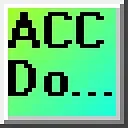Five Steps to PLC Program Development
We will now look at the steps to plc program development. It's surprising that the actual code (ladder logic) is one of the last steps. The plc program development process is not complicated. We have broken the program development into five steps. We will look at a simple die-stamping application. A master switch is used to start the process and shut it down. Two sensors: an upper limit switch that indicates when the piston is fully retracted and a lower limit switch that indicates when the piston is fully extended. When the master switch is turned on the piston reciprocates between the extended and retracted positions. This is achieved with an up-and-down solenoid. When the master switch is turned off, the piston returns to the retracted position, and all solenoids are off. More information can be obtained on our website. https://accautomation.ca/five-steps-to-plc-program-development/ 00:00 Five Steps to PLC Program Development - Punch Press 00:27 Define what has to happen for the punch press 01:08 Define the inputs and outputs required for the punch press application 01:33 Logical Sequence of Operation - Sequence table 04:00 Create PLC Ladder Logic Code 05:05 Testing of our Punch Press PLC program Programming a PLC can sometimes be a daunting task. The best method is to break the task into smaller steps. These are the steps that I have used for years. We will apply them to a die-stamping application. 1. Define the task 2. Define the inputs and outputs 3. Develop a logical sequence of operation 4. Develop the PLC program

